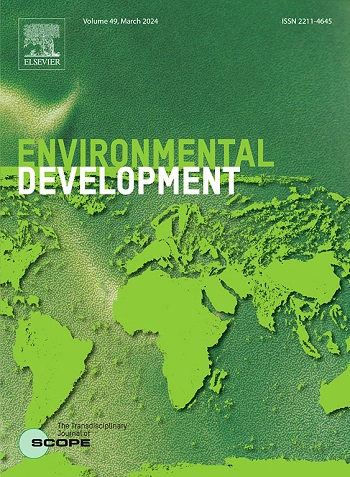中国风电目标的障碍:废物产生和供应风险分析
IF 5.3
2区 环境科学与生态学
Q2 ENVIRONMENTAL SCIENCES
引用次数: 0
摘要
大规模开发风电是实现中国碳中和目标的重要途径。然而,其快速扩张面临着多方面的挑战,包括材料供应和报废管理方面的限制。本研究建立了自顶向下的动态物料流分析(dMFA)模型,通过整合多个能源和技术场景,系统评估了物料需求强度、EoL风力发电机组的时空分布以及供应风险。研究表明,华北、西北和华东地区对稀土元素的严重依赖和EoL管理是主要障碍。到2050年,稀土的累计需求量将达到155.1-246.8 kt,其中镝(Dy)和铽(Tb)面临高风险。到2050年,在重点地区回收EoL涡轮机将贡献28%、22%和18%的全国二次供应,从而缓解材料短缺问题。这将镝的供应压力从55.6%降低到49.6%,尽管结核病仍然短缺。为确保物资的长期安全,进一步扩大稀土资源的回收利用或探索城市采矿回收利用势在必行。本文章由计算机程序翻译,如有差异,请以英文原文为准。
Barriers to China's wind power target: waste generation and supply risks analysis
The large-scale development of wind power is a critical pathway for achieving China's carbon neutrality goals. However, its rapid expansion faces multiple challenges, including constraints in material supply and end-of-life (EoL) management. This study develops a top-down dynamic material flow analysis (dMFA) model and systematically assesses the intensity of material demand, the spatial and temporal distribution of EoL wind turbines, and supply risks by integrating multiple energy and technology scenarios. Our study reveals that the primary barriers lie in the heavy reliance on rare earth elements (REEs) and EoL management in the North, Northwest, and East China. By 2050, the cumulative REEs demand would be 155.1–246.8 kt, with dysprosium (Dy) and terbium (Tb) facing high risks. Recycling EoL turbines in key regions could mitigate material shortages by contributing 28 %, 22 %, and 18 % of national secondary supply by 2050. This reduces the supply pressure for Dy from 55.6 % to 49.6 %, although a shortfall remains for Tb. To ensure long-term material security, it is imperative to further expand REEs recycling or explore recovery through urban mining.
求助全文
通过发布文献求助,成功后即可免费获取论文全文。
去求助
来源期刊

Environmental Development
Social Sciences-Geography, Planning and Development
CiteScore
8.40
自引率
1.90%
发文量
62
审稿时长
74 days
期刊介绍:
Environmental Development provides a future oriented, pro-active, authoritative source of information and learning for researchers, postgraduate students, policymakers, and managers, and bridges the gap between fundamental research and the application in management and policy practices. It stimulates the exchange and coupling of traditional scientific knowledge on the environment, with the experiential knowledge among decision makers and other stakeholders and also connects natural sciences and social and behavioral sciences. Environmental Development includes and promotes scientific work from the non-western world, and also strengthens the collaboration between the developed and developing world. Further it links environmental research to broader issues of economic and social-cultural developments, and is intended to shorten the delays between research and publication, while ensuring thorough peer review. Environmental Development also creates a forum for transnational communication, discussion and global action.
Environmental Development is open to a broad range of disciplines and authors. The journal welcomes, in particular, contributions from a younger generation of researchers, and papers expanding the frontiers of environmental sciences, pointing at new directions and innovative answers.
All submissions to Environmental Development are reviewed using the general criteria of quality, originality, precision, importance of topic and insights, clarity of exposition, which are in keeping with the journal''s aims and scope.
 求助内容:
求助内容: 应助结果提醒方式:
应助结果提醒方式:


